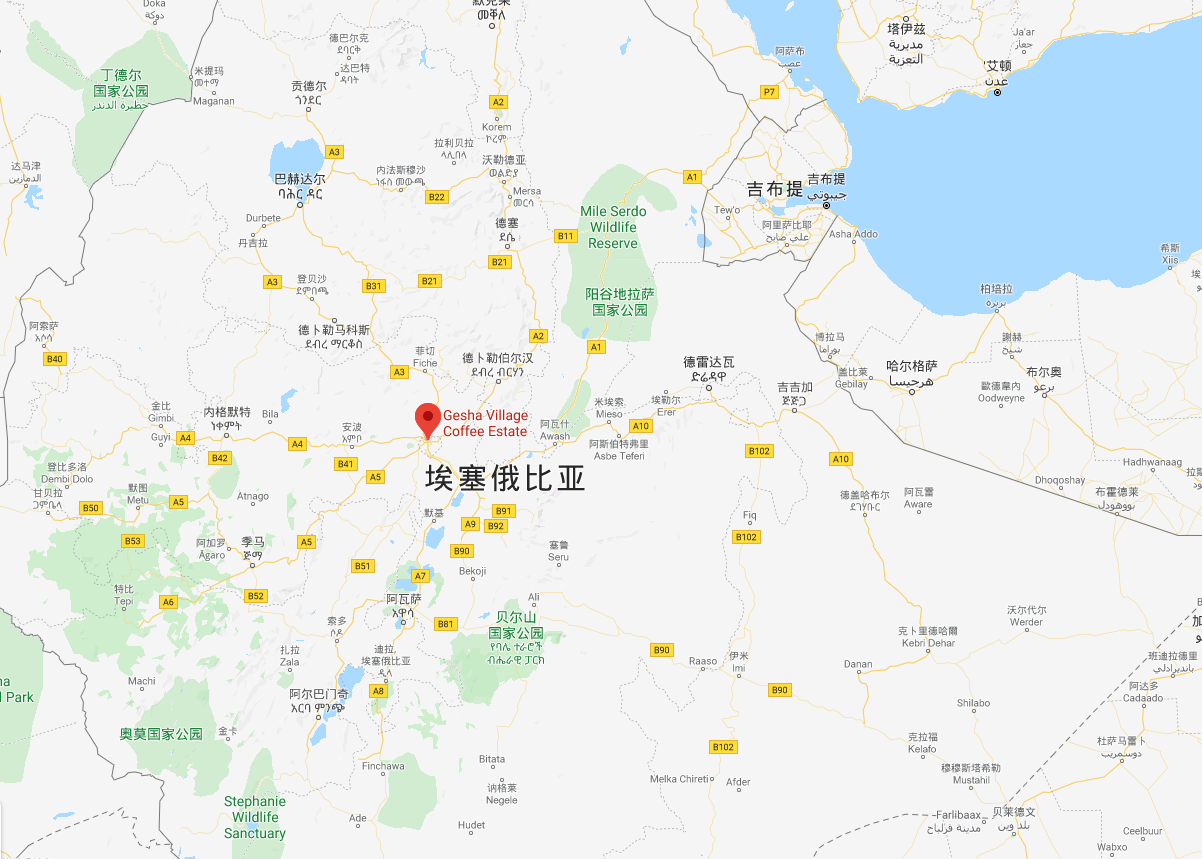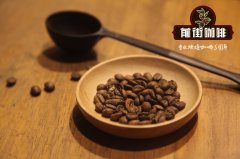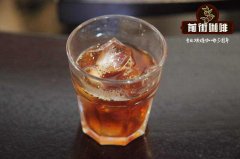Introduction to Guixia Village, Ethiopia| What kind of breed is Guixia Village and how to classify it

In the westernmost part of Ethiopia, just a few kilometers from the border with South Sudan, is the dense jungle of Bench Maji. This is a place of breathtaking natural beauty, where the plateau can extend into a vast ancient forest. This breathtaking view is home to the coffee farm in Rosa Village, a 471ha coffee farm that Adam Overton has built from scratch over the past six years.

The seeds were collected from the Gori Gesha Coffee Forest, 20 kilometers from the village of Rosa. Through historical investigations and genetic tests, the location of Gori Gesha has been identified as a collection site for Panamanian geisha.
Rosa 1931 (Gesha 1931): this is selected from a diverse forest population similar to the Panamanian geisha. Select by looking at the shape of the plant, the shape and size of the beans, and the results of the cup test.
Gori Gesha: this native variety replicates genetic diversity in the Gori Gesha forest. These seeds were harvested through our own expedition in 2011.
In addition, there is another species from the Ethiopian Research Center: the Irubab Forest (Illubabor Forest).
The selection of the resistant variety was obtained from an investigation in the Illubabor coffee forest in 1974.
Grade
Jinbiao: it accounts for only 10% of the annual output of Ruoxia Village. The batches usually selected by competitors from all over the world, bakers with high quality requirements will also be purchased, with complete traceability, outstanding flavor and high complexity of each batch. It is the best grade of the manor second only to competitive bidding.
Red mark: a batch with complete traceability, with a typical Rosa village flavor, accounting for 15% of the total output, excellent flavor properties and excellent cup quality, with a score of 88 or more in the SCA 100-point system.
Green label: a batch from a single plot and a single variety, with a typical flavor of Rosa Village, with a slightly weaker flavor intensity and complexity than that of the Red Standard batch.
Chaka: a blend of Rosa Coffee from Rosa Village, which includes three varieties, namely, Gori Gesha, Gesha 1931 (Gesha 1931) and Illubabor (Essel).
Important Notice :
前街咖啡 FrontStreet Coffee has moved to new addredd:
FrontStreet Coffee Address: 315,Donghua East Road,GuangZhou
Tel:020 38364473
- Prev

Introduction to the Flavor of Sidamohan Bella Coffee Coffee is also called Huakui Coffee Bean.
Hambella is located in GUJI, Ethiopia's largest coffee producing region, and its administration is subordinate to Oromia. The west of Humbera is across the mountain from kochore, and the north-east is opposite the shakiso,Uraga and Kerchaz producing areas of Guji, respectively.
- Next

Introduction to the characteristics of Bebeka producing area in Ethiopia | how about coffee in Bebeka producing area
The 93 square kilometer Bebeka coffee plantation, located 28 kilometers southwest of Mizan Tefari (an hour's drive), is the largest and oldest coffee farmer in Ethiopia.
Related
- Detailed explanation of Jadeite planting Land in Panamanian Jadeite Manor introduction to the grading system of Jadeite competitive bidding, Red bid, Green bid and Rose Summer
- Story of Coffee planting in Brenka region of Costa Rica Stonehenge Manor anaerobic heavy honey treatment of flavor mouth
- What's on the barrel of Blue Mountain Coffee beans?
- Can American coffee also pull flowers? How to use hot American style to pull out a good-looking pattern?
- Can you make a cold extract with coffee beans? What is the right proportion for cold-extracted coffee formula?
- Indonesian PWN Gold Mandrine Coffee Origin Features Flavor How to Chong? Mandolin coffee is American.
- A brief introduction to the flavor characteristics of Brazilian yellow bourbon coffee beans
- What is the effect of different water quality on the flavor of cold-extracted coffee? What kind of water is best for brewing coffee?
- Why do you think of Rose Summer whenever you mention Panamanian coffee?
- Introduction to the characteristics of authentic blue mountain coffee bean producing areas? What is the CIB Coffee Authority in Jamaica?

